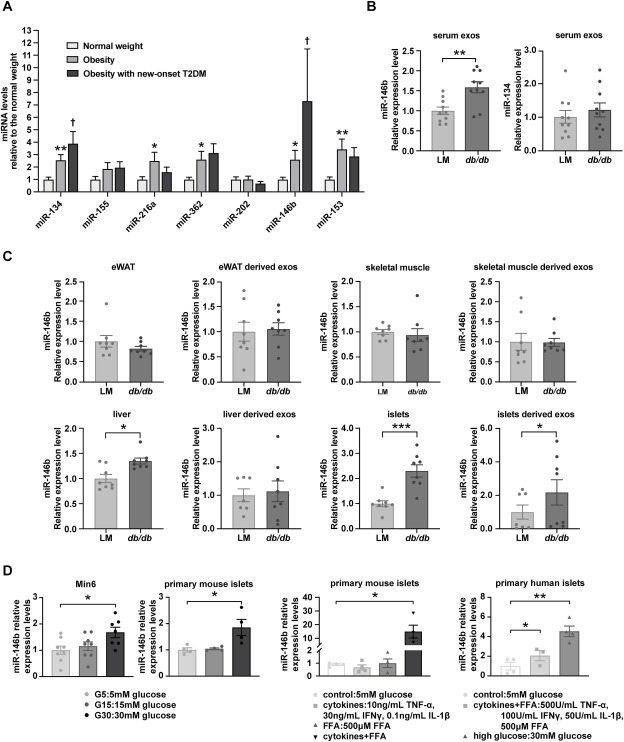
miR-146b/Btg2 axis as a potential inducer of islet beta-cell decline during the progression of obesity to T2DM


We evaluated the potential mechanisms responsible for inducing beta-cell decline during the progression of obesity to type 2 diabetes mellitus (T2DM). Between February 2021 and February 2022, 25 subjects with non-diabetic obesity, 20 subjects with obesity and new-onset T2DM, and 25 healthy volunteers were recruited. Circulating exosome-contained miRNA expression profiling was performed by miRNA sequencing. The role of specific miRNA was analyzed by a gain-of-function approach in Min6 beta-cells, mouse islets, and human islets. Expression of 83 exosomal miRNAs was differently regulated in the circulation of subjects with non-diabetic obesity. We focused on miR-146b, which was mildly up-regulated in non-diabetic obesity and dramatically up-regulated in obese new-onset T2DM. Using an obese diabetic db/db mouse model, we found the expression of miR-146b to be mainly increased in islets. Overexpression of miR-146b in mouse beta-cells, mouse islets, and human islets in vitro facilitated beta-cell apoptosis yet inhibited its proliferation and insulin synthesis, leading to impaired insulin secretion. Eventually, miR-146b directly targeted the B cell translocation gene 2 (Btg2), an antiapoptotic transcriptional factor. Overexpression of Btg2 reversed miR-146b-induced apoptosis and -suppressed proliferation in beta-cells. miR-146b that targets Btg2 might be a predictive biomarker and an inducer of beta-cell decline.
